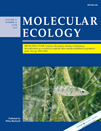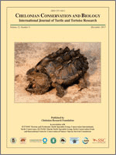
Conservation Genetics Resources
Scope & Guideline
Preserving Nature's Blueprint for Future Generations
Introduction
Aims and Scopes
- Genetic Marker Development:
The journal consistently publishes research on the development of various genetic markers, such as SNPs (Single Nucleotide Polymorphisms), SSRs (Simple Sequence Repeats), and microsatellites, to facilitate genetic studies across diverse species. - Non-invasive Genetic Techniques:
There is a strong emphasis on non-invasive methods for genetic sampling, enabling the study of wildlife populations without the need for capturing or harming the animals. Techniques include fecal DNA analysis and environmental DNA (eDNA) sampling. - Population Genetics and Conservation Biology:
Research articles often explore population structure, genetic diversity, and the impact of genetic factors on conservation strategies, providing essential data for managing endangered species and understanding their ecology. - Ecological and Evolutionary Insights:
The journal also highlights studies that connect genetic data with ecological and evolutionary processes, helping to understand how species adapt to changing environments and the implications for conservation. - Application of Advanced Genomic Technologies:
There is a focus on employing high-throughput sequencing and other advanced genomic technologies for genetic analysis, which enhances the resolution and accuracy of conservation-related genetic studies.
Trending and Emerging
- Environmental DNA (eDNA) Applications:
The use of eDNA for monitoring biodiversity and detecting rare or invasive species has surged, providing a non-invasive tool that enhances conservation efforts by allowing for the assessment of species presence without physical capture. - Genomics and Population Genomics:
There is an increasing trend towards the application of population genomics, where whole-genome sequencing and SNP analysis are utilized to understand genetic diversity and structure within populations, informing conservation management. - Hybridization Studies:
Research addressing hybridization and its implications for conservation is on the rise, reflecting growing concerns about genetic integrity and the impact of hybrid species on native populations. - Conservation Genetics of Invasive Species:
There is a notable increase in studies focused on the genetics of invasive species, aiming to understand their genetic makeup, spread, and impacts on native ecosystems, highlighting the need for effective management strategies. - Non-invasive Monitoring Techniques:
The development and validation of non-invasive monitoring techniques, including fecal sampling and genetic tracking, are increasingly prominent, emphasizing their importance for studying elusive or endangered species.
Declining or Waning
- Traditional Morphological Studies:
There appears to be a waning focus on purely morphological studies for species identification and classification, as molecular techniques such as DNA barcoding and genetic markers gain preference for their accuracy and reliability. - General Biodiversity Surveys:
Research articles that focus solely on general biodiversity assessments without a genetic component are becoming less frequent, as the integration of genetic data is increasingly recognized as vital for comprehensive conservation assessments. - Historical Genetic Studies:
There is a noticeable decrease in studies focusing on historical genetic analyses or retrospective assessments, possibly overshadowed by the need for contemporary genetic monitoring and real-time conservation strategies.
Similar Journals

MOLECULAR ECOLOGY
Connecting Genes and Ecosystems for a Sustainable FutureMOLECULAR ECOLOGY is a premier journal published by WILEY, dedicated to the dissemination of cutting-edge research in the fields of ecology, evolution, and genetics. Established in 1992, the journal has rapidly ascended to prominence, currently holding a Q1 ranking in both Ecology, Evolution, Behavior and Systematics as well as Genetics for 2023. With an impressive Scopus ranking of #54 in the Ecology and Evolution category and #65 in Genetics, it is clear that MOLECULAR ECOLOGY is recognized for its contributions to the scientific community, boasting a high percentile ranking of 92nd and 81st, respectively. While the journal does not currently offer open access options, it remains an indispensable resource for researchers, professionals, and students seeking to explore the molecular underpinnings of ecological and evolutionary processes. Published regularly until 2024, this journal serves as a vital platform for advancing our understanding of biodiversity, species interactions, and genetic variability. With its rigorous peer-review process and commitment to excellence, MOLECULAR ECOLOGY continues to shape the landscape of molecular biological research.

GENETICS AND MOLECULAR BIOLOGY
Exploring the DNA of innovation in research.GENETICS AND MOLECULAR BIOLOGY, published by the SOC BRASIL GENETICA, is a prominent journal dedicated to the advancement of knowledge in the fields of genetics and molecular biology. Since its inception in 1998, this Open Access journal has served as a vital platform for researchers, professionals, and students to disseminate their findings and engage with the latest innovations and discoveries. With an impact factor that reflects its growing influence, GENETICS AND MOLECULAR BIOLOGY ranks in the Q3 category for both genetics and molecular biology as of 2023, indicating its position within the academic community. The journal is indexed in Scopus, highlighting its commitment to maintaining rigorous peer-review standards while providing wide-reaching access to quality research. Operating out of Ribeirão Preto, Brazil, it fosters a collaborative environment for academic discourse and research development not only in Brazil but also globally. The journal encourages submissions that explore a wide range of topics in genetics and molecular biology, making it an essential resource for anyone involved in these dynamic fields.

GENES & GENETIC SYSTEMS
Advancing the Frontiers of Genetic ResearchGENES & GENETIC SYSTEMS, an esteemed journal published by the Genetics Society of Japan, serves as a vital platform for the dissemination of innovative research within the fields of genetics, molecular biology, and medicine. Established in 1996 and based in Mishima, Shizuoka, Japan, this journal has actively contributed to the academic community, fostering collaboration and knowledge sharing among researchers and professionals. The journal’s impact can be seen through its category quartiles, which reflect its position in Genetics, Molecular Biology, and Medicine, and while it currently ranks in Q4 in Genetics and Q3 in Medicine (miscellaneous), it is poised for growth as it continues to publish pivotal studies. With a commitment to open access, GENES & GENETIC SYSTEMS ensures that research findings are freely accessible to the global scientific community, promoting a more inclusive approach to knowledge distribution. This journal is essential for students, researchers, and professionals seeking to stay informed of advancements in genetic research and its implications for the broader field of medicine.

GENETIC RESOURCES AND CROP EVOLUTION
Bridging Genetics and Ecology for Enhanced Crop ResilienceGENETIC RESOURCES AND CROP EVOLUTION is a leading academic journal dedicated to the exploration and advancement of genetic resources in agriculture, evolutionary biology, and plant science. Published by Springer in the Netherlands since 1992, this journal aims to foster a greater understanding of the genetic basis of crop evolution and diversity. With a robust impact reflected in its Q2 status in multiple categories, including Agronomy, Ecology, and Plant Science, it ranks impressively within the top quartiles of its fields. As of 2023, it continues to be an essential resource for researchers, professionals, and students who seek to enhance sustainable crop production and biodiversity conservation through innovative genetic methodologies. The journal promotes high-quality, peer-reviewed research that contributes valuable insights into the genetic adaptation of crops in response to environmental changes. While the journal is not open access, its esteemed reputation ensures that the insights it provides reach a wide audience eager to address some of today's most pressing agricultural challenges.

ANIMAL BIODIVERSITY AND CONSERVATION
Connecting science and passion for wildlife preservation.ANIMAL BIODIVERSITY AND CONSERVATION is a distinguished open-access journal dedicated to advancing the knowledge of animal biodiversity and conservation practices. Published by the esteemed MUSEU DE CIENCIES NATURALS-ZOOLOGIA in Spain, it provides a platform for researchers and professionals in the fields of Animal Science and Nature Conservation. With its ISSN of 1578-665X and E-ISSN 2014-928X, the journal has been committed to open access publication since 2001, ensuring that valuable research is easily accessible to a global audience. As of 2023, it holds an impressive Q2 ranking in both Animal Science and Zoology and Nature and Landscape Conservation, reflecting its impact and relevance in the scholarly community. The journal covers a broad scope of topics, contributing vital insights and fostering discussions that support the conservation of biodiversity. With key Scopus rankings revealing its standing among the top journals in its field, ANIMAL BIODIVERSITY AND CONSERVATION continues to be an essential resource for researchers, conservationists, and students dedicated to understanding and preserving the rich tapestry of life on our planet.

GENETICA
Exploring the Genetic Basis of Biological DiversityGENETICA is a prominent journal published by SPRINGER, dedicated to advancing the field of genetics and its applications across various biological disciplines, including animal science, plant science, and insect science. Since its inception in 1919, the journal has consistently served as a vital platform for researchers and professionals to disseminate high-quality research findings that explore the genetic bases of biological phenomena. With its current scope spanning from 1943 to 2024, GENETICA holds a commendable position in the academic community, as evidenced by its Q2 ranking in both animal science and insect science, and its active contribution to interdisciplinary studies in genetics. Although the journal does not offer open access, it remains accessible through institutional subscriptions and libraries, ensuring its vital research is widely circulated. Researchers, professionals, and students alike will find GENETICA an invaluable resource for the latest discoveries and methodologies in the ever-evolving landscape of genetics.

SILVAE GENETICA
Advancing tree genetics for a sustainable future.SILVAE GENETICA is a dedicated academic journal in the field of forestry and genetics, published by SCIENDO. Based in Germany, this journal has been a key platform for advancing knowledge in tree genetics and management since its inception. The journal has demonstrated its commitment to quality research with its categorization in the Q3 quartile for Forestry and Q4 for Genetics as of 2023, indicating its relevance and contribution to the respective fields. With an ISSN of 0037-5349 and an E-ISSN of 2509-8934, SILVAE GENETICA covers a diverse range of topics related to the genetic analysis and improvement of forests, employing innovative techniques beneficial for both researchers and practitioners. The journal is indexed within Scopus, ranking #76 in its category for Agricultural and Biological Sciences and #281 for Genetics. While it does not offer Open Access, the importance of the journal's contributions to forestry science and genetic studies cannot be overstated, making it an essential resource for researchers, professionals, and students alike.

HEREDITY
Exploring the Genetic Frontier: Insights from HEREDITYHEREDITY is a prestigious academic journal published by SpringerNature, specializing in the dynamic fields of Genetics and Genetics (Clinical). With a history of excellence since its inception in 1947, this journal has established itself as a significant contributor to the understanding of genetic research, addressing both foundational principles and clinical applications. Operating without an open access model, it maintains a strong reputation with an impact factor that reflects its rigorous peer-review process and high-quality submissions, ranking in the top quartiles of its category as evidenced by its Q2 classification in Genetics and Genetics (clinical) for 2023. Further, HEREDITY holds commendable positions in Scopus rankings, illustrating its influence within the field, currently placed #21 out of 99 in Medicine (Clinical Genetics) and #87 out of 347 in Biochemistry, Genetics, and Molecular Biology (Genetics). Researchers, professionals, and students are invited to explore the latest discoveries and advancements in genetics through this esteemed journal, contributing to the broader discourse and innovation within the field.

Journal of Asia-Pacific Biodiversity
Advancing ecological knowledge for a sustainable Asia-Pacific.Journal of Asia-Pacific Biodiversity is an esteemed academic journal dedicated to advancing knowledge in the dynamic fields of biodiversity, ecology, and related biological sciences. Published by the NATL SCIENCE MUSEUM & KOREAN NATL ARBORETUM, this journal serves as a crucial platform for researchers and professionals seeking to explore and disseminate impactful findings pertaining to the Asia-Pacific region's rich biological diversity. With an E-ISSN of 2287-9544, the journal is indexed in leading databases, achieving a Q3 ranking across various categories in 2023, including Animal Science and Zoology, Ecology, Insect Science, and Plant Science. It strives to unite scientific research across disciplines, thus fostering a deeper understanding of ecological dynamics and conservation efforts within this vital region. The journal operates with an open access policy, ensuring that findings are widely available for widespread benefit, making it an essential resource for students, researchers, and environmental practitioners alike. Since its initiation in 2013 and continuing through 2024, the journal remains committed to delivering high-quality, peer-reviewed articles that contribute significantly to the global conversation on biodiversity and ecosystem sustainability.

CHELONIAN CONSERVATION AND BIOLOGY
Advancing chelonian conservation for a sustainable future.Chelonian Conservation and Biology is a distinguished academic journal dedicated to advancing the field of chelonian research, encompassing conservation, ecology, and biology of turtles and tortoises. Published by Allen Press Inc in the United States, this journal is well-regarded within the realm of Animal Science and Zoology, as well as Ecology, Evolution, Behavior and Systematics, holding a commendable Q3 ranking in both categories for 2023. With an ISSN of 1071-8443 and an E-ISSN of 1943-3956, the journal features a diverse range of articles aimed at professionals, researchers, and students, fostering an understanding of the critical challenges facing chelonians worldwide. Although not an open-access publication, Chelonian Conservation and Biology provides high-quality content, including original research, reviews, and case studies, encouraging engagement and collaboration among experts. With coverage extending from 2006 to 2024, the journal serves as a vital platform for disseminating knowledge and promoting conservation efforts essential to the survival of these remarkable species.